New IPCC report discovers the important climate factor…and ignores it!
By D. E. Koelle
According to its own statutes, the IPCC is mainly responsible for anthropogenic climate change – and much less so for natural climate change, which has been around since the Earth first appeared. That could very well be the reason why the sun gets mentioned only with respect to its solar irradiance intensity at the edge of the atmosphere. There the irradiance is 1361 W/sqm and is relatively constant, and so the role of the sun on mid-term climate change is not taken into account.
However, for the first time in the history of the IPCC reports, the 2013 AR5 report discusses the Surface Solar Radiation (SSR) as a decisively important factor (chapter 2.3.3.). Decisive for the climate and temperature changes is not the solar irradiance at the edge of the atmosphere, rather it is the amount of solar energy that makes it to the Earth’s surface.
Between the Earth’s surface and the outer edge of the atmosphere we have the atmosphere with its clouds and aerosols, which determine how much solar radiation eventually reaches the surface of the Earth. Since 1983 the International Satellite Cloud Climatology Program (ISCCP) has been measuring global cloud coverage. One spectacular result was the decrease in global cloud cover between 1987 – 2000, from 69% to 64%, i.e. precisely during the period of warming that triggered the CO2 hypothesis.
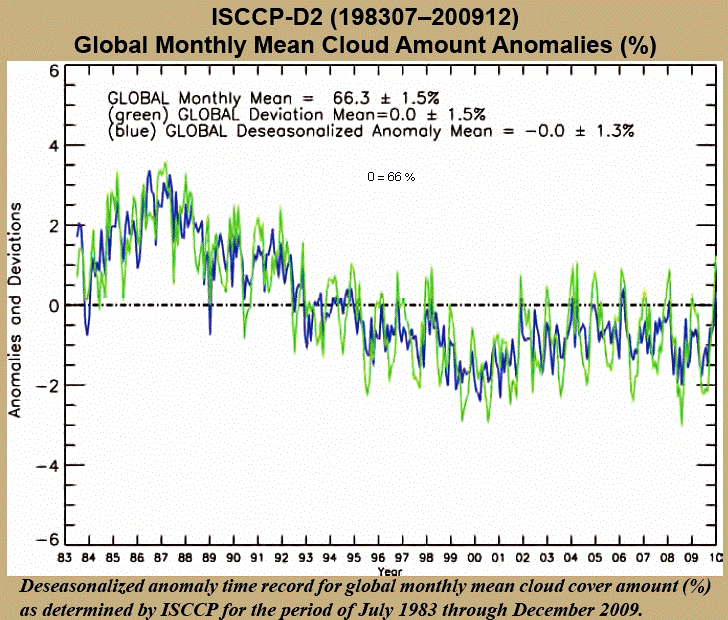
Figure 1: Mid-term variation of mean global cloud coverage according to data from the ISCCP for the period 1983 to 2010.
Of course this finding did not fit well with the current popular narrative and was immediately criticized and doubted. This prevented it being adopted by the IPCC report of 2007. Indeed cloud observation and the evaluation of the data from satellites are difficult and the results are subject to interpretation. But in the meantime we have recognized that there is an objective method of determining the effects of clouds and the impact of solar dimming: by measuring the effective solar radiation at the surface of the Earth. For the first time this is discussed in the new IPCC report in Chapter 2.3.3 and is confirmed by the longest existing dataset from Stockholm. It shows a clear fluctuation of solar energy between 90 and 135 W/sqm. And the range is considerably greater at lower latitudes.
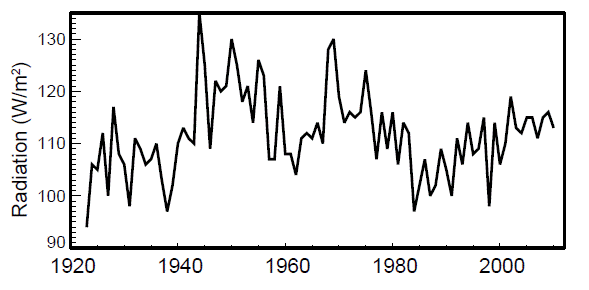
Figure 2: Effective solar insolation at the Earth’s surface for Stockholm 1922-2010 (59° north latitude).
The data from Stockholm not only correspond to the ISCCP-results, but also to the global temperature trends. Not only do the rise of global temperature and SSR correspond between 1910 and 1940, but also for the temperature drop between 1944 and 1980, and the rise until 2000. Figure 3 shows a comparison of 10 temperature curves from 10 global weather stations, without the statistical manipulations of a so-called “global mean temperature”.
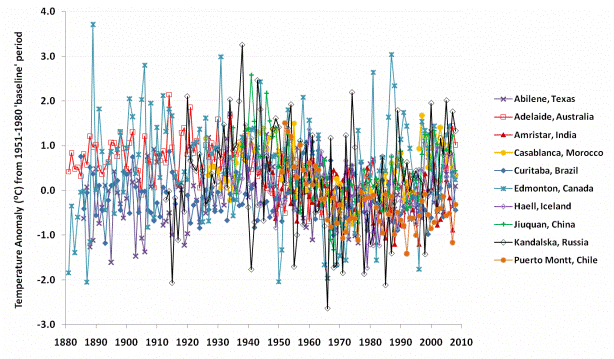
Figure 3: Real temperature measurement values from cities on the globe.
The SSR curve correlates excellently with the original GISS dataset for the US temperature history yin 1999, before it was tampered with.
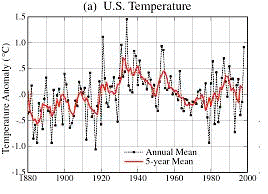
Figure 4: The original GISS temperature history for the USA as it looked in 1999. It was then replaced by a new curve which moved the maximum value to the year 1998.
Even if the important SSR factor gets mentioned for the first time in an IPCC report, this does not mean it was taken into account in other chapters of the report, and especially for the temperature development – to the contrary – it was ignored. Only the CO2 hypothesis is valid. Here the entire 0.8°C temperature rise of the last 100 years, for which part or all of it gets attributed to CO2, can be explained by the impacts of the effective solar radiation at the Earth’s surface without any CO2 effects.
Already the temperature rise of 0.6°C between 1910 and 1940 cannot be explained by the CO2 effect because the CO2 concentration increased by less than 10 ppm during the period (from 298 to 307 ppm). Then from 1940 to 1975 the temperature fell 0.2°C – and certainly not because of a CO2 drop. The renewed temperature increase of 0.6°C from 1980 to 1998 was the initiator of the CO2 hypothesis. However, the temperature increase can be better explained by the increase in SSR intensity. The fact that the predicted continued temperature increase never materialized, and that there’s been a slight drop since 2000, completely contradicts the CO2 hypothesis.
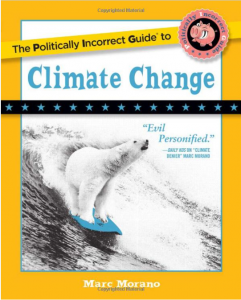

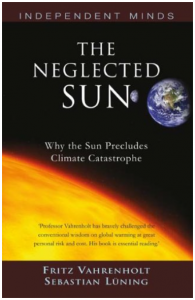
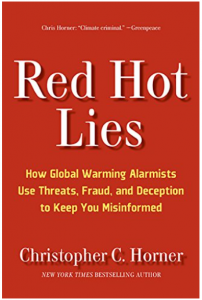

Good report – explains very clearly way why TSI is not important. What is important is the energy that actually reaches the Earth’s surface, and that we see is highly variable due to clouds and aerosols. Indeed over the last 130 years temperature has correlated with CO2 only 45 years: 1920-1945 and 1978 – 1998. That’s it!
Not really. From 1920 to 1945 CO2 rose 7 ppm and temperature rose 0.28°C. From 1978 to 1998 GISS reports 0.56°C temperature rise and CO2 rose 32.09 ppm. Not much of a correlation. Oh, and the RSS satellite temperature rise was 0.45°C. But I can pick other years and get much less correlation. There are several stretches of 40, 50, and even 80 years with no temperature difference and huge CO2 differences. A better observation is that there are only those two stretches of years where CO2 and temperature have both risen. Article coming. (That’s why the numbers were at my fingertips..)
Which is precisely why the IPCC ignored it, it does not fit their reason for being.
ie Wealth distribution allowed by taxing the “Polutant” CO2.
It was never about Science or understanding the Climate, in fact it has nearly destoyed the very science it purports to be.
A related post on the role of the clouds:
wattsupwiththat.com/2013/11/29/study-lack-of-cloud-physics-biased-climate-models-high
Ref. GISS Temperature History Adjustments: has this ever been audited by an independent body?
Ref. “Effective Solar Insolation at Surface”: do there exist datasets for multiple sites going back several decades (i.e., with global coverage)?
Kurt in Switzerland
Kurt, I know nothing of the solar insolation question, but I remember that until a few years ago, Jim Hansen would tweak the GISS records every couple of months, making the past colder and the present warmer; and in between times flatten the temperature records of the 1930s.
I cannot remember any audit, except by Climate Audit and WattsUp. Neither were convinced.
Steven Goddard has a post on the rewriting of the temperature history:
http://stevengoddard.wordpress.com/data-tampering-at-ushcngiss/
Jeff, Pethefin:
Thank you for input and the link. If Goddard’s claims are even only in part true, this would justify a Congressional Inquiry, IMHO.
With Hansen’s GISS controlling the temperature records while simultaneously pushing the CO2 doomsday meme, we would appear to have a classic conflict of interest (fox guarding the henhouse).
Would you agree?
Kurt in Switzerland
We have pblished several ‘sunshine hours’ at the talkshop, with another coming tomorrow. The IPCC ignores the obvious, for obvious reasons. You can’t tax sunshine!
You can’t tax sunshine? I would not be surprised if some politician would support such a proposition. If they can’t tax carbon then something else must be found guilty…..
Hey Rog, Spain is doing it:
http://www.bbc.co.uk/news/business-24272061
Good info. But wouldn’t it be sufficient to ask alarmists why they believe current sea level rise is caused by humans inasmuch as it’s come up some 400 feet since the last ice age began melting…. and the annual increase is so miniscule that it may be off 100%. The measurements are around 1 to 2 mm per YEAR !
@ Alex; Can’t tax the Sun Huh?
“Out Of Ideas And In Debt, Spain Sets Sights On Taxing The Sun”
This is where Green Energy Policy takes us…..
http://www.forbes.com/sites/kellyphillipserb/2013/08/19/out-of-ideas-and-in-debt-spain-sets-sights-on-taxing-the-sun/
A minor but important point. And somewhat off topic, and I apologize for that in advance.
I would suggest that we sceptics start referring to the IPCC as the United Nations IPCC, rather than simply the IPCC. I think that it is important for all readers to be reminded on an ongoing basis that the United Nations, a well-known political organisation with a long history of left wing politics, ineffectiveness and corruption, etc., is the source of all this agw nonsense.
It’s a simple and quick way to remind people that this is about international politics and has nothing to do with science.
Soot may cool or warm the surface, depending on whether it is airborne or deposited. Atmospheric soot directly absorb solar radiation, which heats the atmosphere and cools the surface. In isolated areas with high soot production, such as rural India, as much as 50% of surface warming due to greenhouse gases may be masked by atmospheric brown clouds .
[…] https://notrickszone.com/2013/12/01/ipcc-finds-the-important-natural-climate-driver-solar-surface-rad… […]